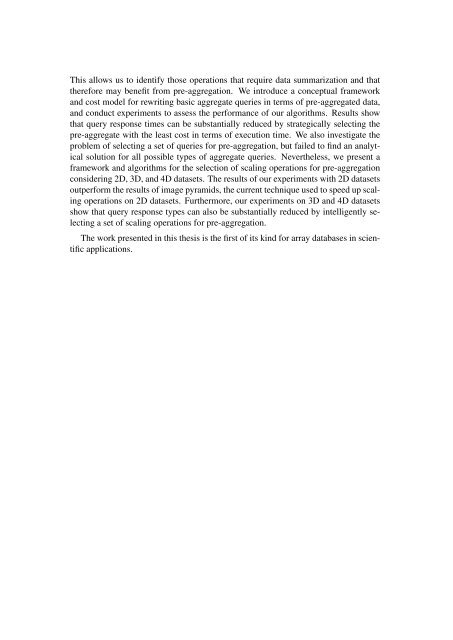Applying OLAP Pre-Aggregation Techniques to ... - Jacobs University
Applying OLAP Pre-Aggregation Techniques to ... - Jacobs University
Applying OLAP Pre-Aggregation Techniques to ... - Jacobs University
Create successful ePaper yourself
Turn your PDF publications into a flip-book with our unique Google optimized e-Paper software.
This allows us <strong>to</strong> identify those operations that require data summarization and that<br />
therefore may benefit from pre-aggregation. We introduce a conceptual framework<br />
and cost model for rewriting basic aggregate queries in terms of pre-aggregated data,<br />
and conduct experiments <strong>to</strong> assess the performance of our algorithms. Results show<br />
that query response times can be substantially reduced by strategically selecting the<br />
pre-aggregate with the least cost in terms of execution time. We also investigate the<br />
problem of selecting a set of queries for pre-aggregation, but failed <strong>to</strong> find an analytical<br />
solution for all possible types of aggregate queries. Nevertheless, we present a<br />
framework and algorithms for the selection of scaling operations for pre-aggregation<br />
considering 2D, 3D, and 4D datasets. The results of our experiments with 2D datasets<br />
outperform the results of image pyramids, the current technique used <strong>to</strong> speed up scaling<br />
operations on 2D datasets. Furthermore, our experiments on 3D and 4D datasets<br />
show that query response types can also be substantially reduced by intelligently selecting<br />
a set of scaling operations for pre-aggregation.<br />
The work presented in this thesis is the first of its kind for array databases in scientific<br />
applications.
















